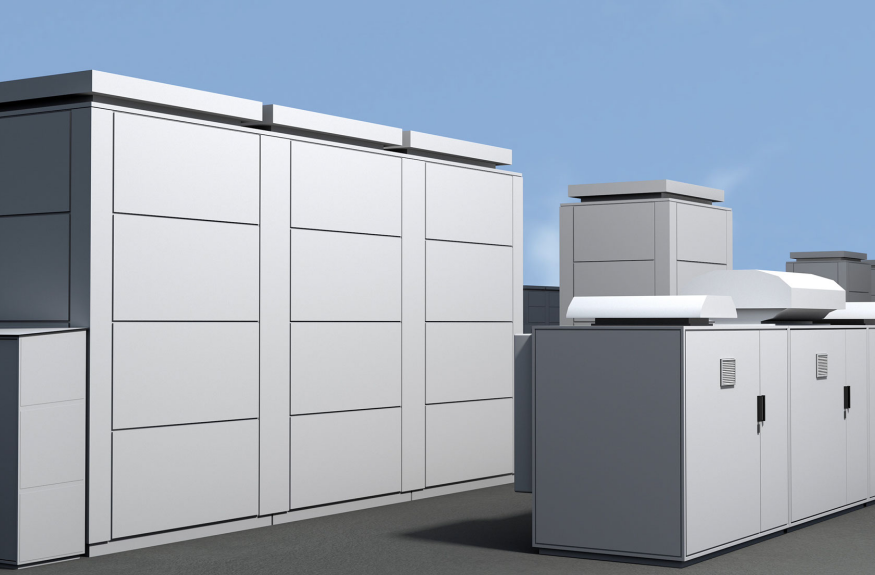Energy Storage Technologies and Net-Zero Policies
Energy storage technologies, when paired with renewable energy systems, have the potential to revolutionize commercial real estate (CRE) by enhancing efficiency and effectiveness. As these technologies become increasingly relevant, they may play a vital role in supporting net-zero corporate and federal policies. Buildings can operate at lower energy costs while utilizing on-site energy generation methods, storing excess energy for later use, and contributing to a greener, more sustainable future.
Corporate Net-Zero Policies
Corporations are increasingly adopting net-zero policies, which aim to achieve a balance between the greenhouse gases emitted and removed from the atmosphere. This often involves reducing emissions through energy efficiency, utilizing renewable energy sources, and offsetting any remaining emissions. Energy storage technologies can contribute to these corporate goals by facilitating the integration of renewable energy into a company’s operations and stabilizing energy supply.
Large corporations, such as Amazon, Google, and Microsoft, have already committed to net-zero emissions targets. As more companies follow suit, the demand for energy storage solutions in CRE is expected to grow, driving further advancements in the technology and increasing the affordability and accessibility of these systems.
Federal Net-Zero Policies
Governments around the world are also implementing policies to achieve net-zero emissions. In the United States, President Joe Biden’s administration has set a goal of reaching net-zero emissions economy-wide by 2050, with the federal government aiming to lead by example. This involves improving energy efficiency in federal buildings, investing in clean energy infrastructure, and supporting research and development of clean energy technologies, including energy storage.
The Department of Energy (DOE) is actively supporting research on energy storage, having recently allocated $505 million towards a four-year initiative to commercialize and implement energy storage in the United States. The DOE’s commitment to supporting energy storage research and development, as evidenced by initiatives like the Energy Storage Grand Challenge, highlights the importance of these technologies in achieving federal net-zero goals. Additionally, federal incentives and regulations that promote the adoption of renewable energy and energy storage technologies can facilitate the widespread implementation of these solutions in commercial real estate.
Benefits of Net-Zero Policies for CRE
Adopting net-zero policies and implementing energy storage technologies can offer numerous benefits to the commercial real estate sector:
- Enhanced Corporate Reputation: Companies that prioritize sustainability and adopt net-zero policies can improve their brand image, attract environmentally conscious customers and clients, and increase their appeal to investors.
- Financial Incentives: Government incentives, such as tax credits, rebates, and grants, can help offset the cost of implementing energy storage technologies and renewable energy systems in commercial properties.
- Increased Property Value: Energy-efficient buildings with on-site renewable energy generation and storage capabilities may command higher market values and rental rates, as well as lower vacancy rates, compared to less sustainable properties.
- Future-Proofing: As regulations continue to evolve, buildings with energy storage systems and renewable energy sources will be better equipped to comply with stricter energy and environmental standards.
- Employee Attraction and Retention: Sustainable buildings can create healthier and more comfortable working environments, which can help attract and retain top talent.
Net-zero policies can bring great benefits, but they also present numerous technological and financial challenges. One emerging solution is energy storage technologies. These systems store energy from solar panels, wind turbines, and other sustainable energy sources, allowing property owners to rely less on traditional energy grids. This reduces energy costs and promotes sustainability, especially during peak demand times.
Long-duration and Short-duration
Energy storage technologies can be divided into long-duration storage and short-duration storage. Long-duration energy storage systems, like pumped storage hydropower (PSH), store energy for extended periods, such as multiple hours or days. Innovations in PSH technology include submersible pump-turbines, geo mechanical PSH, and hybrid systems.
Short-duration energy storage systems, on the other hand, store energy for shorter periods, like hours or minutes. Common examples include lithium-ion or cobalt batteries used in electric vehicles, computers, phones, and other electronic devices.
Implementing energy storage systems in commercial properties not only reduces energy costs but also enhances energy security. On-site renewable energy storage helps building owners and managers optimize their energy usage, making renewable energy systems more cost-effective and suitable for long-duration storage.
Additionally, energy storage technologies can help stabilize and reduce demand on the power grid by providing more reliable electricity. This is particularly valuable in situations where there are fluctuations in renewable energy sources, such as when a sunny period is followed by overcast weeks. Energy storage systems ensure that excess energy generated during optimal conditions is stored and available for use during less favorable conditions.
Emerging Technologies and A Competitive Advantage
Integrating energy storage systems with renewable energy sources reduces reliance on fossil fuels and, as a result, decreases greenhouse gas emissions. A study published in Nature Communications found that some energy storage technologies could enable up to 90-percent reductions in CO2 emissions. The widespread adoption of renewable energy storage solutions could have a significant positive impact on the environment and your properties energy bill. Understanding and staying ahead of emerging long and short-term energy storage technologies will provide CRE owners with new opportunities to store and use energy efficiently. These technologies can offer a competitive edge by lowering costs and enhancing efficiency, all while promoting sustainability and reducing environmental impact.
Energy storage technologies may be one of the keys in achieving net-zero corporate and federal policies. As companies and governments commit to ambitious climate goals, commercial real estate owners and managers must stay informed about emerging energy storage technologies and invest in sustainable solutions. By doing so, they can reap the benefits of lower energy costs, enhanced efficiency, and improved environmental performance, all while contributing to a greener, more sustainable future.
To stay up to date on news and resources such as this and other topics of importance to the real estate industry, subscribe to the free CRE Insight Journal Newsletter using this link.









